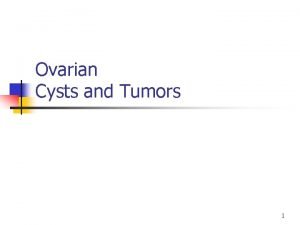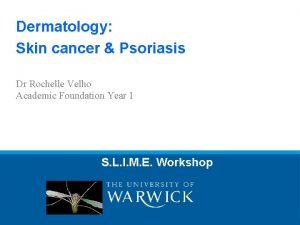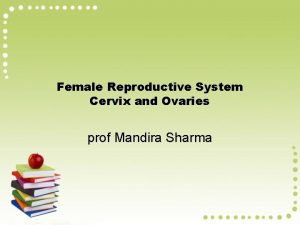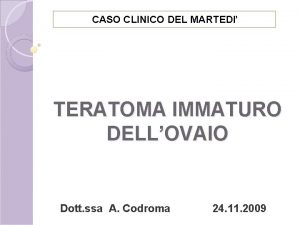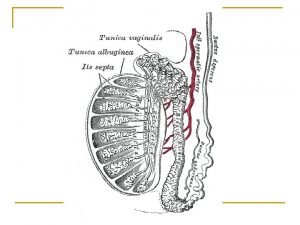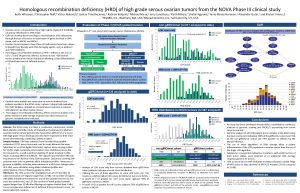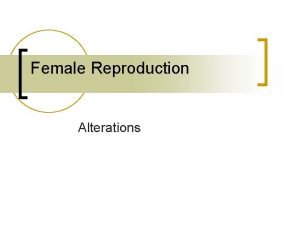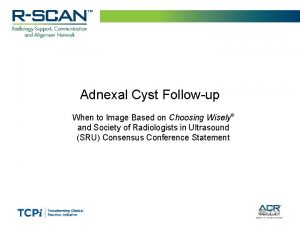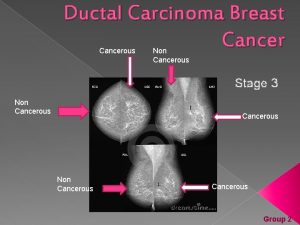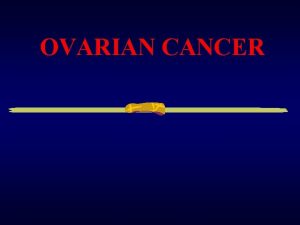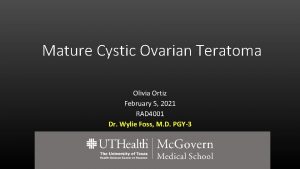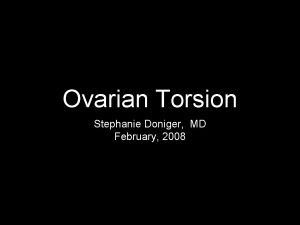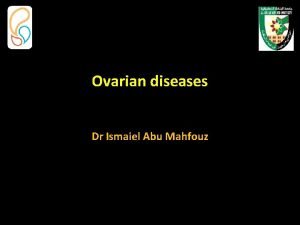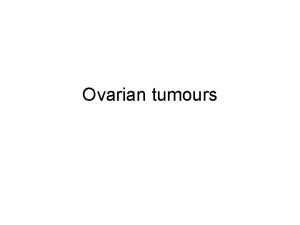So what has happened here Cancerous Teratoma Ovarian













- Slides: 13

So what has happened here?

Cancerous Teratoma Ovarian Teratoma – You can see teeth! http: //home. earthlink. net/~radiologist/tf/040802. htm Image courtesy of Leonard J. Tyminski, M. D. , Radiologist at earthlink. net

Learning Outcomes Questions • What happens when cell division goes wrong? • Identify the two general different types of cancers

Cell Regulation Cell division and gene regulation are controlled by chemical signals and cell cycle regulators (regulatory signals) Pancreas cell Eye lens cell (in embryo) Glycolysis enzyme genes Crystallin gene Insulin gene Hemoglobin gene Key: Active gene Inactive gene Nerve cell

Cancer caused by. . Cancer cells do not respond to regulatory signals and divide excessively to produce a mass of abnormal cells (a tumour). If it is a discrete group of cells, which stay in one place within otherwise normal tissue - BENIGN

Malignant If some of its cells lose the surface molecules that keep them attached to the original cell group, entering the circulatory system (blood or lymph) can spread through the body. New cancerous cells the “seed” into other tissues around the body – forming potential secondary tumours

• Malignant tumors can invade other tissues and may kill the organism Lymph vessels Tumor Glandular tissue Metastasis 1 A tumor grows from a single cancer cell. Figure 8. 10 2 Cancer cells invade neighboring tissue. 3 Cancer cells spread through lymph and blood vessels to other parts of the body.

How does it start? • Most cancers start from a cell that has undergone a series of mutations to the genes involved in the control of cell division • Agents that cause genetic damage ; – – Smoking Pollution Excessive skin exposure to UV light Mustard gas

How do normal cells become cancerous? Selection within tumor for “most cancerous” cells

Which cells are more prone to cancer?

• High frequency of division; – Skin – Lung – Bowel

Testing your knowledge – Cancer 1. a. i. Name ONE medical condition that is routinely treated by using tissue stem cells. ii. From where in the body are these cells obtained? b. Give an example of a medical condition that might be treated in the future using stem cells c. Why can the stem cells used to treat the medical conditions you gave as your answer to a. Not used to patients suffering the condition you gave as your answer to b. ?

Testing your knowledge – Cancer 2. a. One definition of the word ethial is ‘in accordance with principles that are morally correct’. Briefly explain why stem cell research using human embryos raises ethical issues. b. Why is it important that stem cell research is carefully regulated? c. Identify TWO characteristics of cancer cells.
